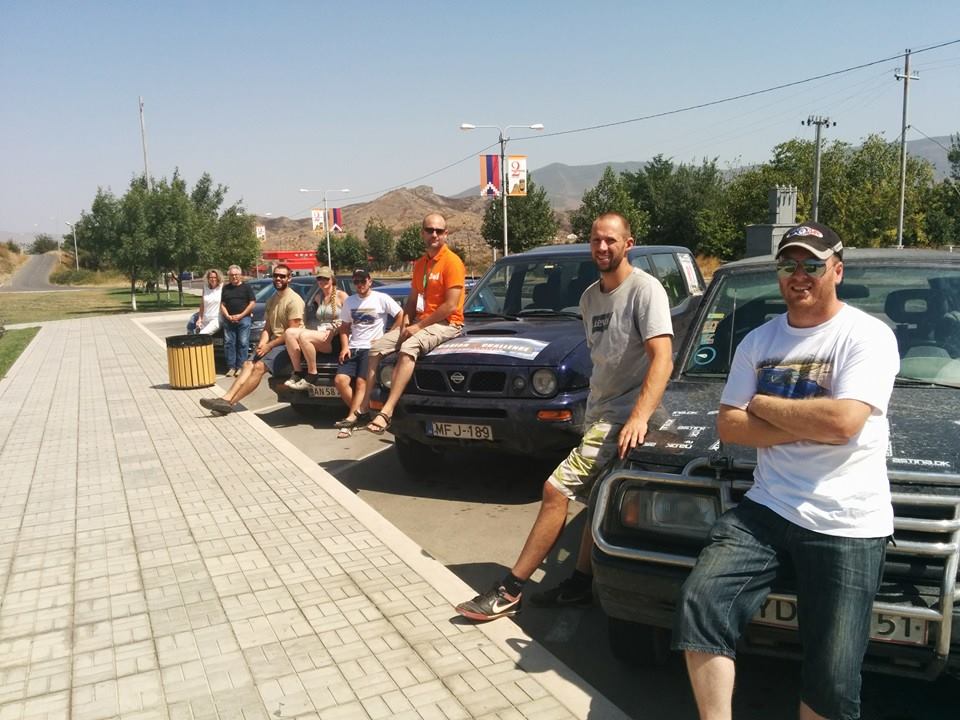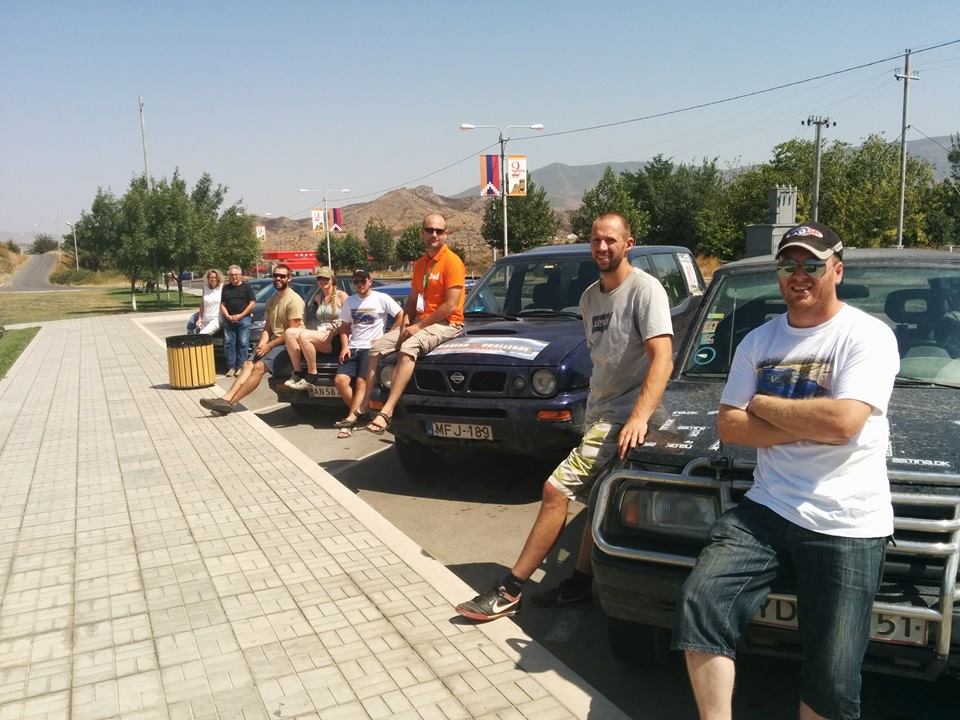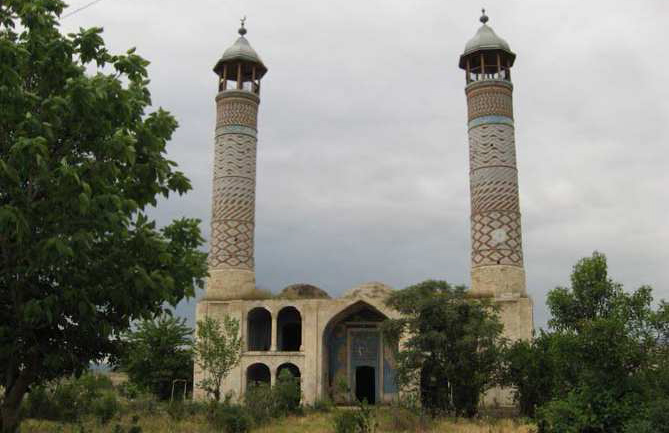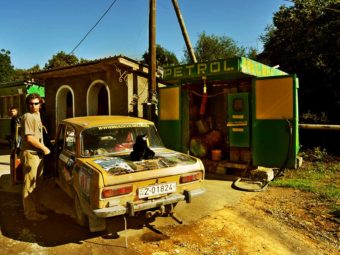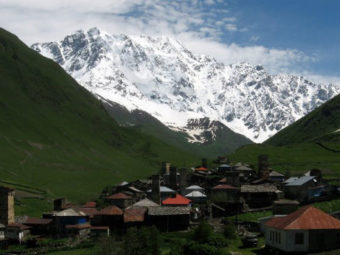We had a good night’s sleep at our comfortable hotel in Vank, so all teams got up bright and early to prepare for today’s 342-kilometre drive to the town of Kapan, Armenia.
This is one of the most interesting parts of our Caucasian Challenge route because it takes us through one of the most remote and mystery-filled places on Earth: the demilitarized zone between Karabakh and Azerbaijan.
But first we made a quick stop at Stepanakert, the capital of Nagorno-Karabakh. This is the largest city in the entire republic, so naturally it’s one of those places you just have to visit if you travel to Nagorno-Karabakh and you want to have the full tourist experience.
First of all, there’s an amazing Armenian brandy factory here, producing one of the best (and most famous) brandies in the Caucasian region. We visited the cellars, where the PanArmenian Network interviewed us and took photos of us sipping some very strong alcohol. We were caught red-handed and now there’s just no way of denying it. We spent a few hours in Stepanakert and loved it so much that we couldn’t leave before buying a few souvenirs to take back home with us.
Further north, we stopped at the famous monument called “We and Our Mountains”, also known as “Tatik u Papik” or “Mamig yev Babig” (meaning “Grandma and Grandpa” in Armenian). It’s not a fancy name, but this sculpture represents the mountain people of Karabakh and is considered a symbol of the Armenian heritage of Nagorno-Karabakh. Sargis Baghdasaryan made it in 1967, using volcanic tufa.
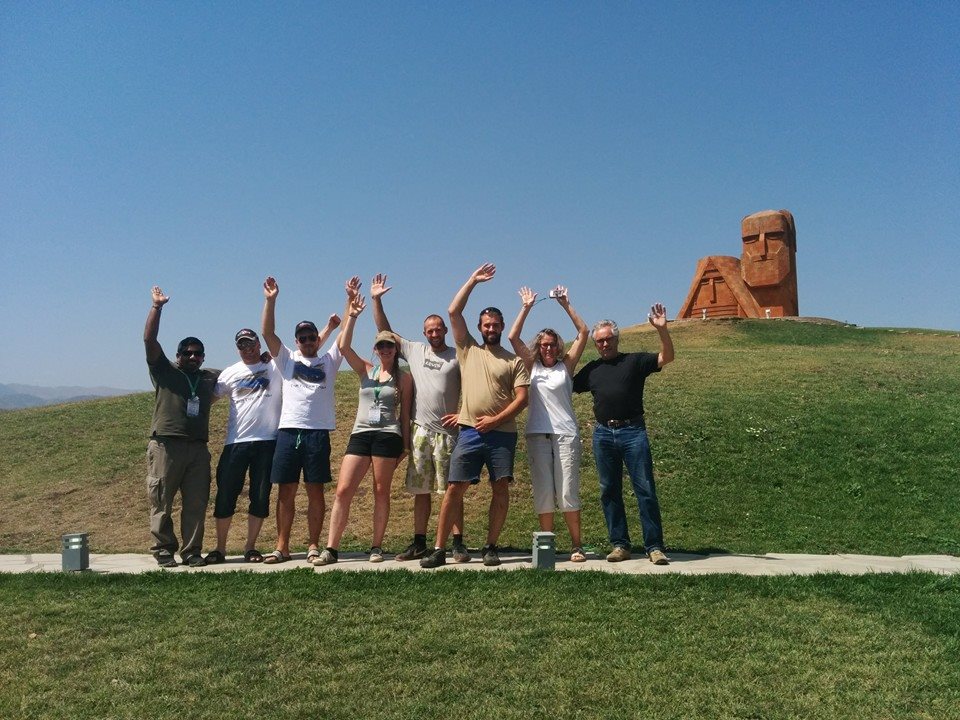
Visiting this stunningly beautiful, mysterious country is always a pleasure. We love coming back here year after year, rediscovering its beautiful mountains, rich culture and heritage. Parts of it are officially off-limits for visitors, and the route we’ve been taking for the past 7 years is mostly “no man’s land”.
As we left Stepanakert, we ventured into the ghost city of Agdam, which has a very interesting past. About 100,000 souls used to inhabit this place before the war, but now it’s completely deserted. There’s nothing here apart from ruins; the only building still standing is the mosque, and if you’re brave enough to venture into this forbidden place you can go all the way up into the minarets, to get a breathtaking view of the surroundings. But it’s not very safe, for all the obvious reasons.
The Danish teams and the Germans took the shorter route through no man’s land, but the Danish had a technical problem and were forced to turn back and take the long way to Kapan. The German team crossed the area without any problems, and was again the first one to make it to the final destination on today’s itinerary.
The Hungarians had an adventure of their own, deep in the demilitarized area, where the locals spotted them and got suspicious. They got questioned by the local policemen, who were very nice and polite, but also very curious to find out what they were doing there. At the end of their little chat the police was convinced that they’re just harmless visitors, so they raised a glass and had some drinks together. Since they were “held” by the police, the Hungarians were the last ones to arrive to the camp, late at night.
In the evening we all gathered around a table, shared our stories, had a few drinks (but not too many!), and had an early night. Tomorrow is the last day of our adventure in the Caucasus and we need to prepare for the final 366-kilometre drive to Yerevan, Armenia.
A big day and a huge goodbye party await us tomorrow!
